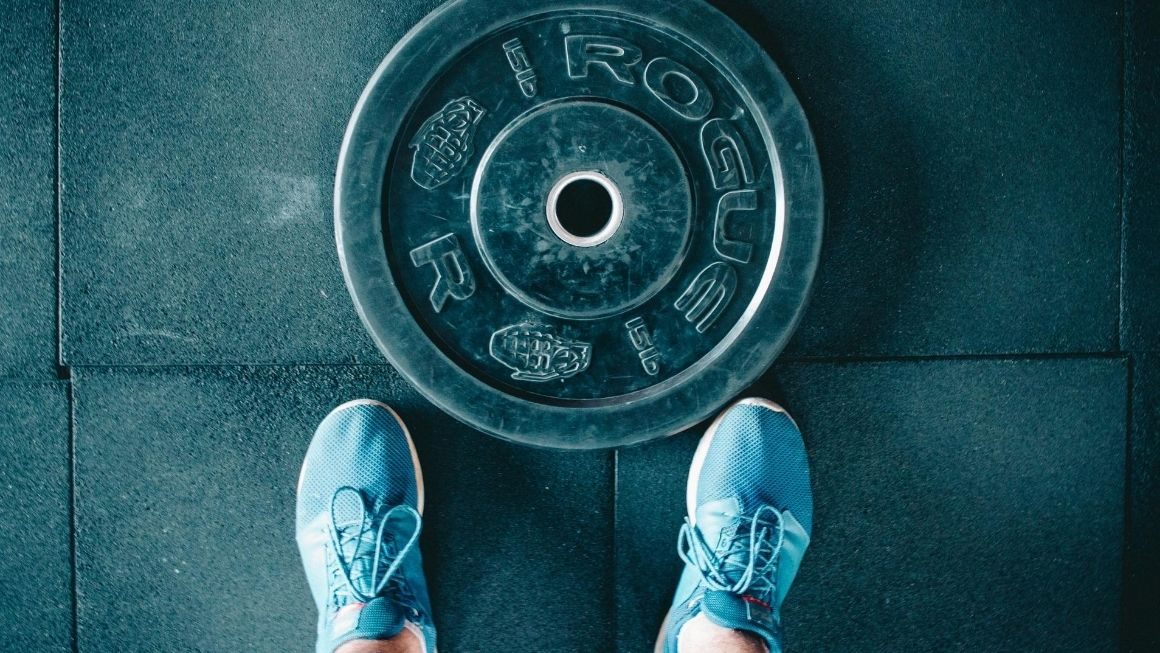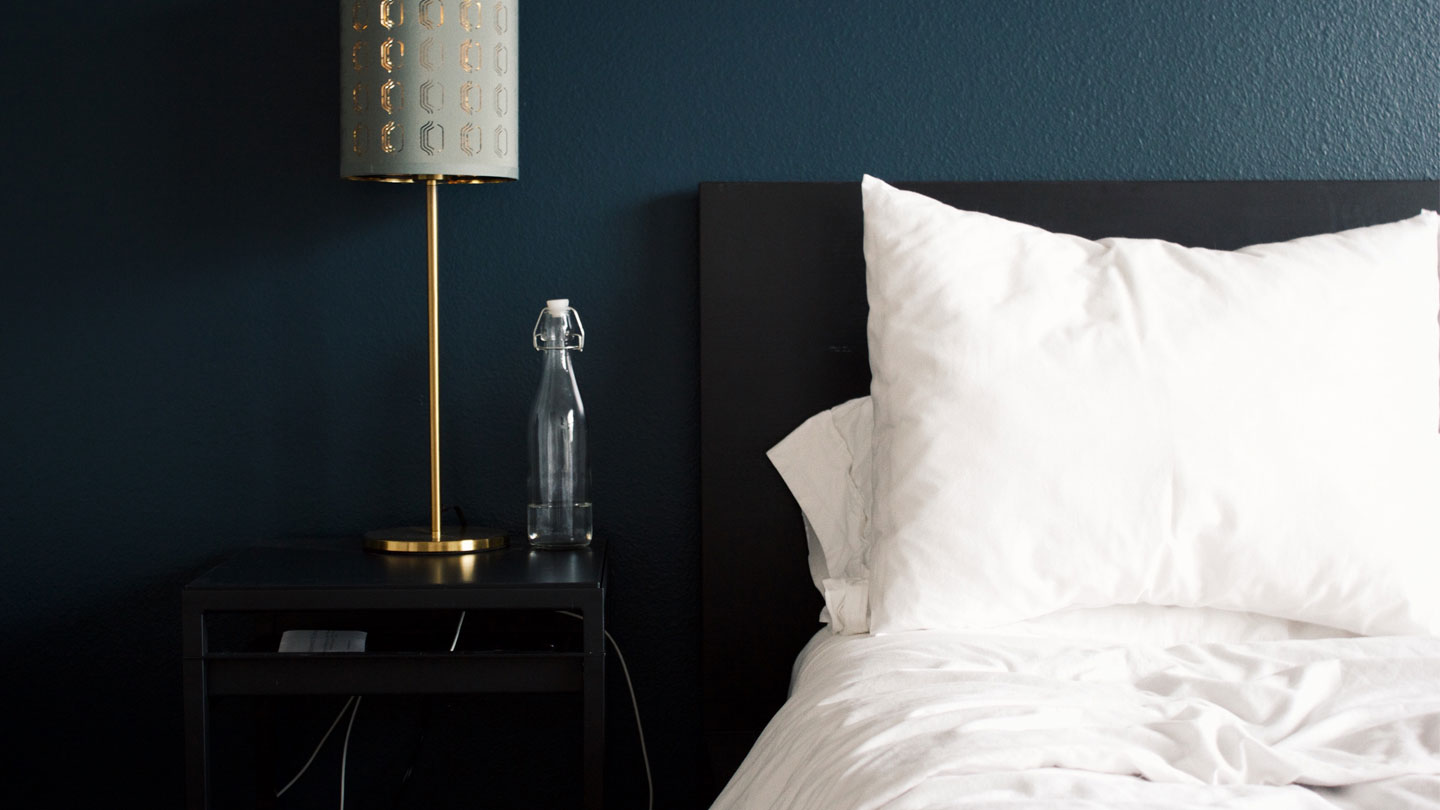 OK, so ‘post-COVID’ might be jumping the gun a little, but nonetheless gyms have finally re-opened! (Blessed be). I’d been trying my best to maintain at least a modicum of my usual fitness routine. But with no squat rack or bench in sight, it proved difficult. With space the size of a yoga mat to train in, and spending my time working from home, I’ve basically spent the past few months body-weight squatting and doing core workouts, which while amazing for my quads, glutes and core, it’s seen my overall fitness level plummet and within the last few weeks my motivation to workout has fallen off a cliff. Needless to say, I’ve been very excited to get back to the gym. So I was surprised to realise that my reaction was overwhelming one of nerves and anxiety. Over 15 years on from my first workout in a gym, I was suffering from a severe case of gym fear. I needed to figure out how to start working out again.
OK, so ‘post-COVID’ might be jumping the gun a little, but nonetheless gyms have finally re-opened! (Blessed be). I’d been trying my best to maintain at least a modicum of my usual fitness routine. But with no squat rack or bench in sight, it proved difficult. With space the size of a yoga mat to train in, and spending my time working from home, I’ve basically spent the past few months body-weight squatting and doing core workouts, which while amazing for my quads, glutes and core, it’s seen my overall fitness level plummet and within the last few weeks my motivation to workout has fallen off a cliff. Needless to say, I’ve been very excited to get back to the gym. So I was surprised to realise that my reaction was overwhelming one of nerves and anxiety. Over 15 years on from my first workout in a gym, I was suffering from a severe case of gym fear. I needed to figure out how to start working out again.
For 123 days I had tried my best to at least maintain (I realised very quickly that ‘progress’ for me wasn’t an option due to the weights I know longer had access too), but as the days went on I realised I wasn’t winning. I was putting on weight, I felt soft and not in control of my body. The knock-on effects were tough; I had mood swings like I’d never experienced, compounded by the additional effects of isolation. I’d go from happy to sad in a flash, then angry again when I was trying to train but couldn’t execute a move properly out of fear of hitting something.
Now I know what you’re thinking, why didn’t I train outside? To be totally upfront, I just simply fucking hate training outside. I did try a few runs here and there, but as a someone who is extremely body-conscious, I just don’t like the thought of people seeing me exercise outside, even though I don’t mind in a gym. It’s odd, I know. Perhaps it’s because I’m OK in a gym, I succeed in weight lifting. Outside, with things like long-distance running and metcon-type sessions, I’m weak. And I don’t want people seeing me flatline every five seconds.
As I’m writing this, I’m a few sessions down in the gym and still feeling a bit lost and unsure. I have my old routine but I’m not sure it’s the correct thing to be doing straight away, and I’m acutely aware of not overdoing it until I’m back in the flow (mainly the flow of 5.30am wake-up calls. FML). I’ve been ‘doing a bit of everything’ to see how it feels, and mainly I feel pain. A heavy squat-based class had left my lower back feeling like I’m 100. From looking at friends on social, I’m not the only who feels like this. I realised I need to change my priorities, set new interim goals to recondition my body and then reintroduce my old goals. So for me, it’s back to basics. Firstly, I’m reducing the amount I go, dropping from 6 sessions a week to 4 and I’m focusing on overall conditioning and compound movements to get my body working as a unit again. I’m peppering the workouts with classes to elevate my overall endurance and I’m working on lower rep counts and progressive overloads on weights.
But this is just what works for me, and I’m always conscious , so I reached out to a PT friend of mine. Alex has helped train me through injuries and plateaus and come out the otherwise stronger and better. Due to an on-going shoulder issue, I was maxing out at 50/60kgs on the bench and was getting frustrated with overall progression. I’d seen Alex in the gym with clients for ages and always noticed the insane gains they were all making, so I decided a PT was what I needed. Sure enough, with Alex’s guidance on how to better condition my shoulder, I was soon hitting a 1RM of 110kg. I spoke with friends and people on social about what they were most concerned about with regards to getting back to the gym and put the questions to Alex.
As a side note: If you’re starting out for the very first time in the gym, the information below will be useful to you, but I also recommend you read this great article by Ben Weil. The gym can be daunting for many, especially those in the LGBTQ+ community, Ben offers an eloquent and inclusive take on stepping into the gym for the first time.
Now over to Alex…
It’s never been more important to really understand and look after your body. The pandemic, and resulting lockdown gave me the breathing space to really take a step back from the fast pace of life before, and the perspective to consider and reevaluate priorities moving forward. Unfortunately, lockdown also provided us with no access to gyms and has typically forced people into two camps – either having to go running or get creative with home workouts, or exercising less than ever before. I know from speaking with clients that whichever camp people have been in many are extremely keen to get back in the gym right now and start working hard to make up for the lost time.
As exciting as it is that gyms have now reopened, just take a minute and breathe. Let’s look at this logically. Say during lockdown you exercised at about 40% of your average capacity, is heading into the gym like a bull in a china shop a wise move? Injury avoidance is key for longevity. So remember, goals aren’t achieved overnight. They are the result of a well thought out plan, approached with discipline and consistency.
What’s your key advice on how to start working out again for the first time since lockdown?
- Leave your ego at the door and ease your way back in
- Start off with shorter sessions than pre lockdown
- Plan an effective warm-up, cool down and rest periods between exercises
- Be smart about your weight choices, just because you could bench 80kg before lockdown, that doesn’t necessarily mean you can or should start there now
- Make sure to increase your fluid intake, as I’m sure during lockdown with the less frequent physical activity this would have dropped slightly
- Allow allocated ‘active recovery’ and ‘full rest’ days, both are important!
As much as this sounds extreme, it is hugely important if you are wanting to reach new goals. But…go out there and enjoy it! One thing I learnt from lockdown was just how much having the option to go to a gym and be physically able to exercise is a huge privilege.
Should I go straight back to my old routine?
This depends on how intense your old routine was and how sedentary your lifestyle became during lockdown. If you were extremely active pre-lockdown and resorted to a more ‘relaxed’ lifestyle recently, then my advice is no. You’re muscles, joints, bones and central nervous system will not be accustomed to that training programme and intensity anymore and it is vital to start off lightly and slowly ease your way in, increasing the intensity over the first few weeks.
How slowly should I go to getting back to my usual routine?
This really depends on you and your goals. Whether you’ve trained at home with weights, taken up running, or not trained at all, use the first few sessions at the gym to really find out where your body is at. It’s not only your muscles that need to feel able. Your central nervous system won’t be used to the same intensity as it once was. It’s hugely important to build your workouts back up with a steady approach to avoid injuries and burning out.
I feel sluggish all over after not being able to move much during lockdown, what can I do to wake my whole body up and make it feel connected again?
It’s only natural that we feel sluggish after the start to the year we’ve had, especially if you were an overly active person before. My advice, if you haven’t moved much at all, would be to ease your way back in with a brisk walk and if you feel you can, progress the walk into a light jog. As you’re moving, focus on your breathing and the muscles you’re using. Picture the oxygen being carried to those muscles. The same approach can be taken with an at home bodyweight circuit. Make sure to include movements such as squats, lunges, press-ups and the plank. With each of these movements, focus on each individual muscle group as you perform that exercise. Using these techniques will help you to reconnect with your body.
Am I better to head straight back into the gym, or should I do classes?
This really is a personal choice and one that depends a lot on your previous training history. The majority of classes out there now are great and they’ve definitely come along way since those hilarious lycra-fever 80s step aerobics classes. Unfortunately, the aim for the majority of these classes is to maximise calories burned by completely smashing you for 45-60 minutes, all while 1 instructor watches twenty-plus participants. This doesn’t provide much feedback when it comes to form. I have seen many people get injured to training to ‘hard and fast’ and then getting frustrated that their work has resulted in injury and falling off the wagon. In fact, I’ve seen many people repeat that cycle over and over!
A better approach if you really want to target long term goals would be to get advice from a Personal Trainer. They will be able to guide you with an effective yet safe training programme specific to your goal, whilst keeping an eye on your form…especially important where you may have forgotten some of the basics. If you are an experienced gym-goer already, and you were moderately active during lockdown, then there’s no reason why you can’t head straight back in the gym, but be mindful of a smart approach to re-training.
My nutrition has fallen off the wagon during lockdown, how can I get my diet back on track?
…you’re not alone! We are all in the same boat (even those who say they’re not)! I mean, the biscuit cupboard is right there – all day!
With that in mind, take a similar approach as with training. Don’t throw yourself in at the deep end expecting massive results within 1 day! Try changing one thing at a time. If you’ve been eating too much, just work on getting your calories back on track. In order to work out how many calories your body needs on achieve your goal, we need to firstly work out your Basal Metabolic Rate (BMR). BMR is the number of calories your body needs to accomplish its most basic (basal) life-sustaining functions. One popular way to estimate BMR is through the Harris-Benedict formula, which takes into account weight, height, age, and gender.
How to calculate your BMR
Women
BMR = 655 + (9.6 × weight in kg) + (1.8 × height in cm) – (4.7 × age in years)
Men
BMR = 66 + (13.7 × weight in kg) + (5 × height in cm) – (6.8 × age in years)
Once your BMR has been calculated, we then need to work out how many calories you burn on a daily basis, by including your activity to determine how many calories your body requires to maintain its weight. This is known as Total Daily Energy Expenditure (TDEE).
How to calculate your TDEE
To calculate your TDEE, your next step is to include the number of calories you burn during daily activities based on your lifestyle:
Sedentary – If you get minimal or no exercise, multiply your BMR by 1.2.
Lightly active – If you exercise lightly one to three days a week, multiply your BMR by 1.375.
Moderately active – If you exercise moderately three to five days a week, multiply your BMR by 1.55.
Very active – If you engage in hard exercise six to seven days a week, multiply your BMR by 1.725.
Extra active – If you engage in very hard exercise six to seven days a week or have a physical job, multiply your BMR by 1.9.
The final number is approximately how many calories you need on a daily basis to maintain your weight. A good general rule to follow if you are training to lose weight / reduce body fat is to reduce your calorie intake by 20% and if you are looking to add on some size, increase by 20%.
Once you’ve managed to get your calories back on track then you can focus on your macros (Protein/Carbs/Fats). The percentage split between the 3 will again depend on your personal goals.
Huge thanks to Alex for this time and knowledge. Make sure you follow him on
Instagram for workout tips, to get in touch about PT and get endless motivation. You can’t also check out his Youtube Channel
here. or sign up to a free trial of
WOD.SQD, Alex’s training workout community.
The importance of BMR and TDEE
I think the BMR/TDEE numbers are crucial for anyone at any point in their training journey. I’ve had multiple conversations with people over lockdown who had no idea about these terms, yet they were trying to get in shape. Most of them didn’t realise that when you see information around men needing an average of ~2500 calories a day and ~200 for women, that this is an average BMR, the number is pulled from the average calories people’s bodies burn in order to function. It’s not a random number plucked out of the air. So to know this for yourself, then to be able to layer this knowledge with your TDEE number, you will have a better idea of what you need to progress, whatever your goals are.
An important note: To clarify, your TDEE number is inclusive of your workouts/activity levels. So calories burnt in an activity should not be added on as extra calories to eat – this is especially important for those who use food tracking apps like My Fitness Pal. Your other option is to figure out for BMR, then add on calories based on workouts as you burn them (this is a CHORE and not my personal preference). As always, you are unique, your body is unique (and beautiful and yours) and these numbers are guidelines. You can invest in things like heart rate monitors or smartwatches with monitors to give you a more exact number of your daily totals. This is how I track my overall performance.
It doesn’t matter how you start, it matters that you start
When it comes to how to start working out again after a hiatus, there’s no right or wrong way to get back into it, it’s just about being mindful of your body, being realistic and, most importantly, making sure you’re enjoying yourself. My biggest belief is that exercise and the gym should be fun. You should want to be there and look forward to doing it. If you aren’t enjoying it, it’s going to make achieving your goals that much harder. Something else I consider really important is to read up on what you’re doing. Yes, you read an article about supersets or the promise of steady-state cardio, but do you know why they are beneficial? The more you know, the more you able to correlate that to progress. But also, you’re able to change it up to keep it fresh. I do recommend reaching out to a PT like Alex. It’s an investment of money and time, but it’s so worth it for the 1-1 guidance.
Friends with (fitness) benefits
I recommend classes if you struggle with self-motivation. I go to
GYMBOX gyms and their classes are guaranteed mood-boosters, no matter if you’re in it for a sweat drench or something of a slower pace. The group vibe is infectious and helps keep you moving. I’ve also made some great friends this way and we train together outside of the classes too (we also drink wine), and we’ve all egged each other on over zoom throughout lockdown. I would have genuinely been lost without them. Gymbox also offer awesome online classes called
Out The Box (you can get it for free or donate to charity) where Gymbox trainers take you through home versions of their famed classes.
Whether you’re trying to get back into it or starting out for the first time, remember to go easy on yourself. The fact you’re even there making a start is great. Be realistic, keep it fun, ask for advice. My inbox is always open :).
Happy sweating,
Neil
x
 OK, so ‘post-COVID’ might be jumping the gun a little, but nonetheless gyms have finally re-opened! (Blessed be). I’d been trying my best to maintain at least a modicum of my usual fitness routine. But with no squat rack or bench in sight, it proved difficult. With space the size of a yoga mat to train in, and spending my time working from home, I’ve basically spent the past few months body-weight squatting and doing core workouts, which while amazing for my quads, glutes and core, it’s seen my overall fitness level plummet and within the last few weeks my motivation to workout has fallen off a cliff. Needless to say, I’ve been very excited to get back to the gym. So I was surprised to realise that my reaction was overwhelming one of nerves and anxiety. Over 15 years on from my first workout in a gym, I was suffering from a severe case of gym fear. I needed to figure out how to start working out again.
OK, so ‘post-COVID’ might be jumping the gun a little, but nonetheless gyms have finally re-opened! (Blessed be). I’d been trying my best to maintain at least a modicum of my usual fitness routine. But with no squat rack or bench in sight, it proved difficult. With space the size of a yoga mat to train in, and spending my time working from home, I’ve basically spent the past few months body-weight squatting and doing core workouts, which while amazing for my quads, glutes and core, it’s seen my overall fitness level plummet and within the last few weeks my motivation to workout has fallen off a cliff. Needless to say, I’ve been very excited to get back to the gym. So I was surprised to realise that my reaction was overwhelming one of nerves and anxiety. Over 15 years on from my first workout in a gym, I was suffering from a severe case of gym fear. I needed to figure out how to start working out again.

 Welcome!
Welcome!